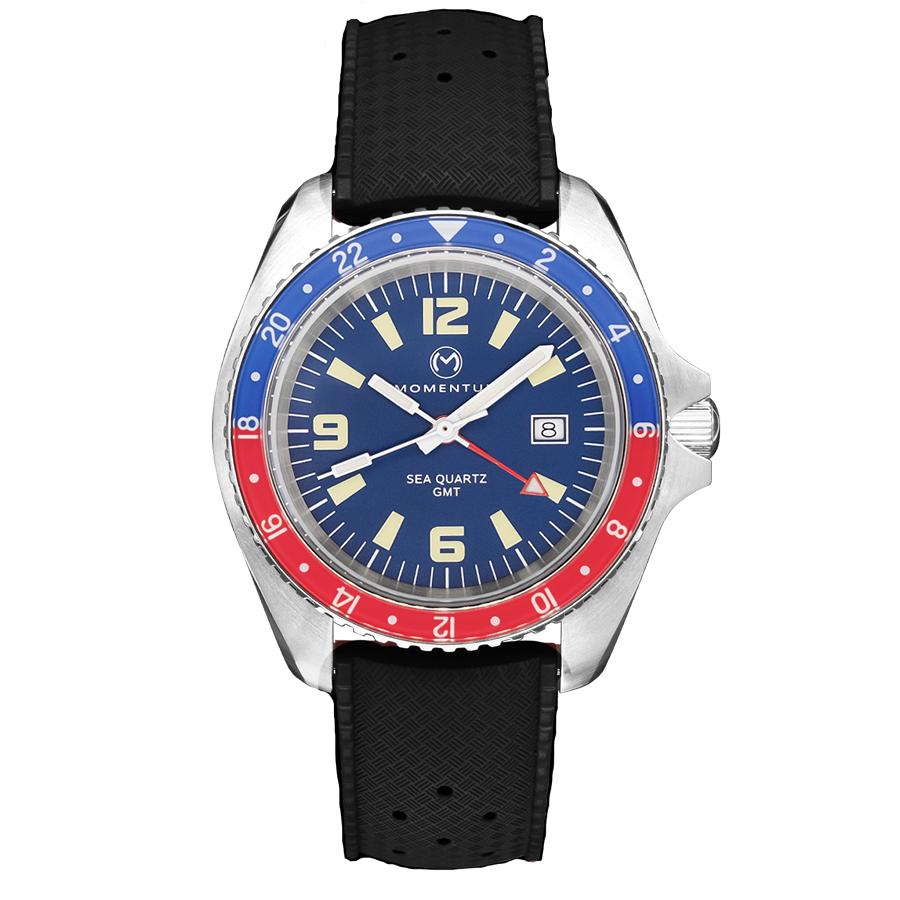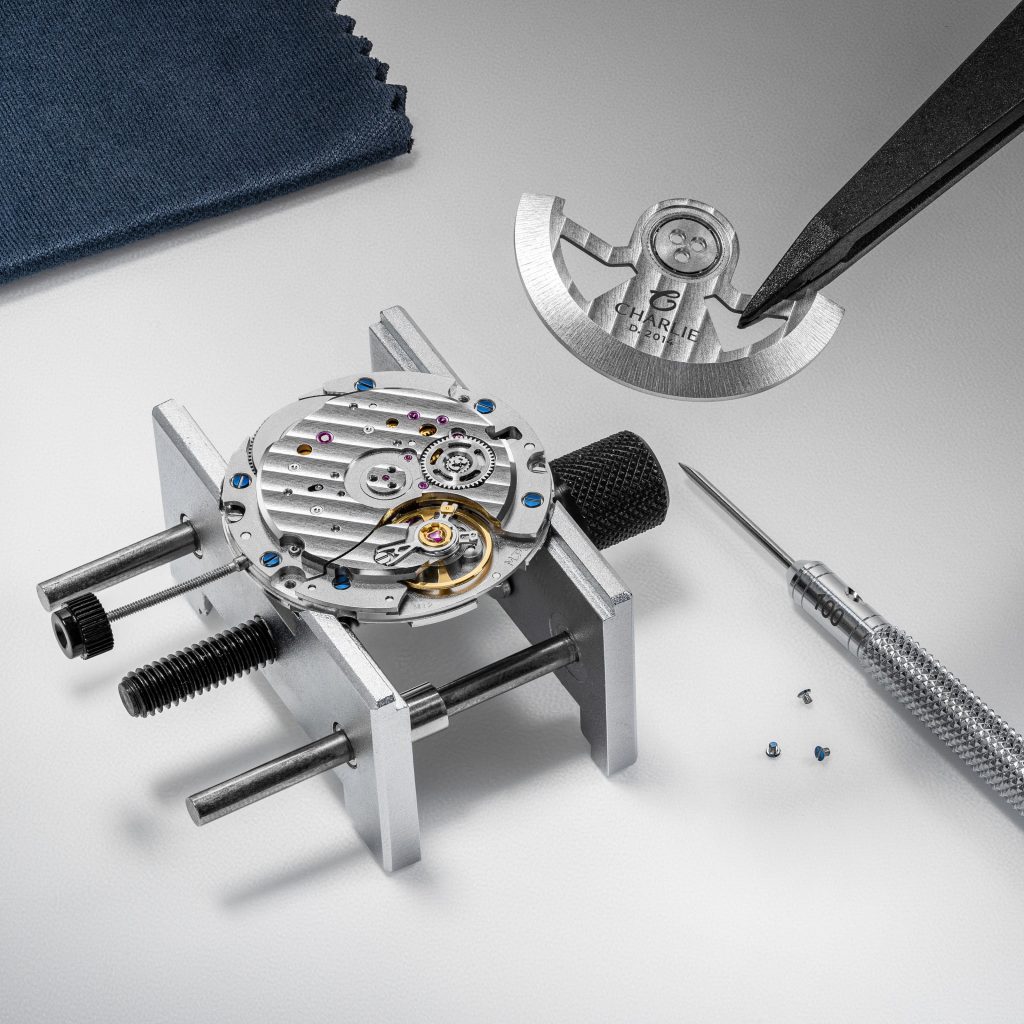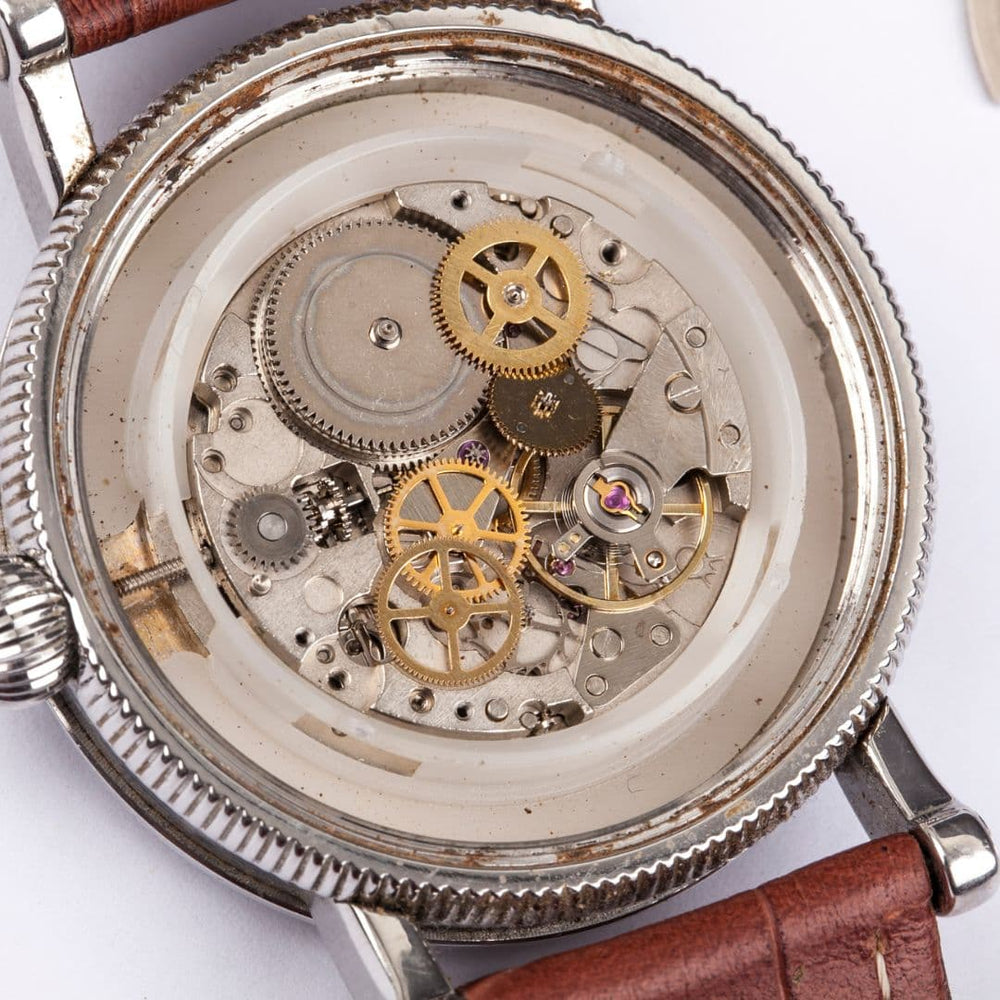Introduction to Quartz Movement
What Is Quartz Movement in Watch – The journey of timekeeping has brought us to the era of quartz movement in watches. This technology changed how we interact with time. But what is quartz movement in watch mechanics? It is a method of keeping time using a quartz crystal. When powered by a battery, the crystal vibrates at a stable frequency. This makes the watch highly accurate. Quartz movement is in many modern watches. It is known for precision and low maintenance. For anyone new to watch technology, understanding quartz movement is key. It helps you make informed choices when buying watches. In this blog, we will explore how quartz movement works and why it is important.
 The History of Quartz Movement in Timekeeping
The History of Quartz Movement in Timekeeping
The quartz movement’s journey starts in the 20th century. In the 1920s, engineers first realized that quartz crystals could keep time. But it took decades of research to turn this idea into reality. The first quartz clock was built in 1927. Yet, it was too large for everyday use. Fast forward to the 1960s, and the idea began to shrink in size. In 1969, the game changed. Seiko, a Japanese watch company, introduced the Astron. This was the world’s first quartz wristwatch. It was a huge hit among consumers. It set a new standard for precision and convenience.
This innovation started a new chapter in watchmaking. It led to the quartz revolution in the 1970s. Quartz watches became famous for their accuracy. They also needed less upkeep than their mechanical counterparts. There was no need for winding as they used batteries. Soon, these watches took over a large share of the market. Big names in watchmaking had to adapt or risk falling behind. This was a pivotal moment in timekeeping history. It shaped how we use and wear watches today. The quartz movement made watches more accessible. Now, people all around the globe rely on its precise timekeeping. This invention truly marks a significant milestone in the history of timekeeping.
How Quartz Movement Works in Watches
Understanding how quartz movement powers watches is fascinating. At the heart of this technology lies a small piece of quartz crystal. This is the key component. When a watch with quartz movement gets power from a battery, the quartz crystal oscillates. It vibrates at precisely 32,768 times per second. The watch circuit measures these vibrations to generate regular electric pulses. These pulses drive the motor. The motor then turns the watch hands at a steady pace. This results in a highly accurate display of time.
The process has few steps, making it reliable. It starts with the battery sending electricity to the quartz crystal through an electronic circuit. The crystal’s consistent vibration creates a signal with precise frequency. It’s this signal that the circuit counts and converts to electric pulses. Finally, the gear train advances the hands of the watch.
What sets quartz movement apart? Its accuracy stems from the crystal’s consistent frequency. This stays true regardless of most external conditions. This stability beats that of mechanical movements. Consider the temperature, position, and magnetism impact. They affect mechanical movements more than quartz. That’s why quartz watches hardly need resetting.
To sum up, quartz movement in watches means:
- A quartz crystal vibrates when powered.
- The crystal’s vibration frequency is exact and stable.
- Electronic circuits count the vibrations.
- Electric pulses move the motor.
- The motor moves the watch hands, showing precise time.
This efficient mechanism ensures quartz watches keep time with minimal deviation. We owe this reliability to the simple yet ingenious use of quartz crystal.
Comparing Quartz Movement to Mechanical Movement
When contrasting quartz movement with mechanical movement in watches, several key distinctions emerge. Mechanical movements are the classic kind, powered by a wound spring that releases energy in a controlled manner to move the watch hands. They need regular winding, either manually or through an automatic system that harnesses the wearer’s arm motion. Quartz movements, on the other hand, use a battery as their power source, which stimulates the quartz crystal causing it to vibrate.
The primary differences boil down to these points:
- Power Source: Quartz watches use batteries, while mechanical watches rely on a wound spring.
- Accuracy: Quartz movements maintain exceptional accuracy, losing only a few seconds per month; mechanical movements can lose several seconds per day.
- Maintenance: Quartz watches demand less upkeep, without the need for winding or frequent servicing, unlike their mechanical counterparts.
- Durability: The fewer moving parts in quartz watches reduce wear and tear, enhancing longevity.
Price often varies between the two types. Mechanical watches can be more expensive due to complex craftsmanship. Quartz watches are typically more affordable and provide consistent performance. This makes them a practical choice for everyday wear. Still, many enthusiasts treasure mechanical watches for their intricate engineering and traditional value.
In summary, if you seek daily convenience and precision, a quartz watch could be your go-to option. Meanwhile, if you appreciate detailed mechanics and don’t mind the extra care, a mechanical watch can be a prized possession. Both styles have unique advantages, making them favored by different segments of watch enthusiasts.
 Advantages of Quartz Movement in Watches
Advantages of Quartz Movement in Watches
Quartz watches offer several benefits that set them apart from mechanical ones. These advantages make quartz movement watches popular among consumers. Let’s delve into the main perks of quartz technology in timepieces.
- Precision: The hallmark of quartz movement is precision. Quartz watches are well-known for keeping time accurately, losing only a few seconds each month.
- Reliability: Due to fewer moving parts, quartz watches are less prone to mechanical issues. This reliability means you can count on your watch every day.
- Low Maintenance: With no need for winding and less frequent servicing, quartz watches are low maintenance. They are ideal for people who prefer convenience.
- Durability: Fewer components also imply enhanced durability. Quartz watches can endure daily wear and tear better than mechanical ones.
- Affordability: Generally, quartz movement watches come at a more accessible price point. This affordability makes them a good option for budget-minded individuals.
- Battery Powered: The use of a battery saves wearers from the chore of winding. It extends the periods between necessary watch services.
- Versatility: Quartz watches fit various styles and occasions. From formal events to casual outings, there’s a design for everyone.
- Consistency: Regardless of climate or position, quartz watches maintain their accuracy. They are unaffected by most external elements that can influence timekeeping.
In conclusion, quartz movement watches offer unmatched accuracy, ease of use, and practicality. These advantages make them a robust choice for many watch buyers.
Maintaining and Caring for Quartz Movement Watches
Quartz movement watches stand out for their low maintenance, yet some care is essential. The maintenance needs of these watches are minimal, making them a practical choice for everyday wear. Here’s how you can maintain and care for your quartz movement watch to ensure its longevity:
- Battery Replacement: The battery is the powerhouse of a quartz watch. It usually lasts between one to two years. Watch for signs like a slowing watch hand, and get the battery replaced promptly by a professional to avoid leaks that can damage the movement.
- Water Resistance: Check your watch’s water resistance level. If it’s not water-resistant, avoid contact with water. For water-resistant models, gaskets may need replacing over time to maintain their seal.
- Cleaning: Wipe the watch with a soft, dry cloth to remove dust and moisture. Never use chemicals or abrasives, as they can harm the watch case and strap.
- Avoid Magnets: Keep your quartz watch away from strong magnetic fields. Magnets can disrupt the timekeeping of the quartz crystal.
- Service Checks: Even though quartz watches are low maintenance, a regular service check every few years can keep it in good condition. This check might include examining the movement, replacing the seals, and testing the battery strength.
- Strap and Bracelet Care: The strap or bracelet of your watch also requires attention. Leather straps need to be kept dry and clean, while metal bracelets might need occasional polishing to keep them looking new.
- Storage: When not in use, store your quartz watch in a cool, dry place. Avoid areas with extreme temperatures or high humidity.
By following these simple steps, you can ensure that your quartz movement watch remains a reliable timekeeper for years to come. Regular maintenance not only preserves the watch’s accuracy but also its aesthetic appeal and overall value.
Innovations and Future of Quartz Movement Watches
The world of quartz movement watches is constantly evolving, with new innovations enhancing their functionality and appeal. Researchers and watchmakers alike are dedicated to improving quartz technology, striving for even greater precision and efficiency. In recent years, the introduction of high-frequency quartz movements has been a significant step forward. These movements operate at higher vibrations per second, therefore reducing the margin of error and boosting accuracy.
Looking ahead, the future of quartz watches seems interwoven with advancements in battery technology. Watchmakers are exploring the use of long-lasting rechargeable batteries to extend the longevity of quartz timepieces. There’s exciting potential in the development of solar-powered quartz watches too. These environmentally friendly options can convert light into energy, reducing the need for battery replacements.
In addition to technological advances, design innovation is also a focus area. Minimalistic, sleek designs coupled with smartwatch capabilities are becoming more prevalent. This includes adding features such as fitness tracking, connectivity to smartphones, and customizable watch faces within the quartz watch market.
One major trend poised to shape the future is the fusion of traditional quartz movement with digital technology. The emergence of hybrid watches combines the reliability and precision of quartz with the interactivity and multifunctionality of digital devices.
We can expect to see further advancements in materials used for quartz watch construction, with the industry exploring new composites and metals that are lighter, more robust, and hypoallergenic. As the demand for precision and durability continues to grow, so does the exploration of innovative solutions.
In conclusion, the future of quartz movement watches holds promising improvements in efficiency, eco-friendliness, and integration with digital technology. These advancements reflect a commitment to innovation while acknowledging the timeless appeal of quartz precision timekeeping.
Popular Watch Brands Utilizing Quartz Movement
Quartz movement’s precision has attracted many watch brands. These brands have integrated quartz technology into their collections. Here we look at some well-known brands that offer quartz movement watches.
- Seiko: The pioneer of the quartz revolution, Seiko remains a leading brand. They offer a wide range of quartz watches for all styles and budgets.
- Casio: Known for durability, Casio’s quartz watches are favored for their ruggedness and multi-functionality.
- Citizen: Citizen has gained acclaim for their Eco-Drive watches. These use light to power the quartz movement, reducing battery waste.
- Timex: An American icon, Timex provides reliable quartz watches. Their pieces are practical and cater to everyday wear.
- Swatch: Swatch has revolutionized the watchmaking industry. Their colorful quartz watches are both fashion-forward and affordable.
- Fossil: Fossil is synonymous with style and accessible luxury. Their quartz watches blend modern design with timeless functionality.
- TAG Heuer: Offering luxury sports watches, TAG Heuer’s quartz timepieces are known for precision and high-performance.
- Omega: While famous for mechanical watches, Omega also has exceptional quartz watches. They bring the same commitment to quality and precision.
- Tissot: A Swiss brand with a heritage, Tissot’s quartz watches reflect classic design and craftsmanship.
- Bulova: They hold an innovative spirit, with quartz watches that stand out for accuracy and unique design features.
Each of these brands has embraced quartz technology, using it to craft watches that meet diverse needs. Whether for fashion, function, or luxury, quartz movement proves versatile. Quartz watches by these brands offer users accuracy and convenience every day.
